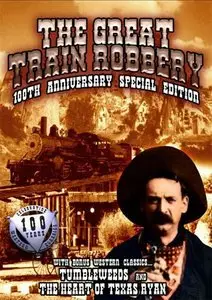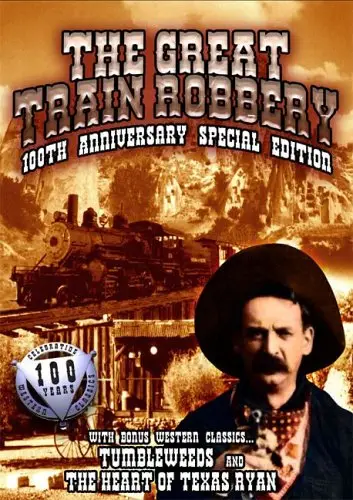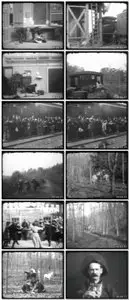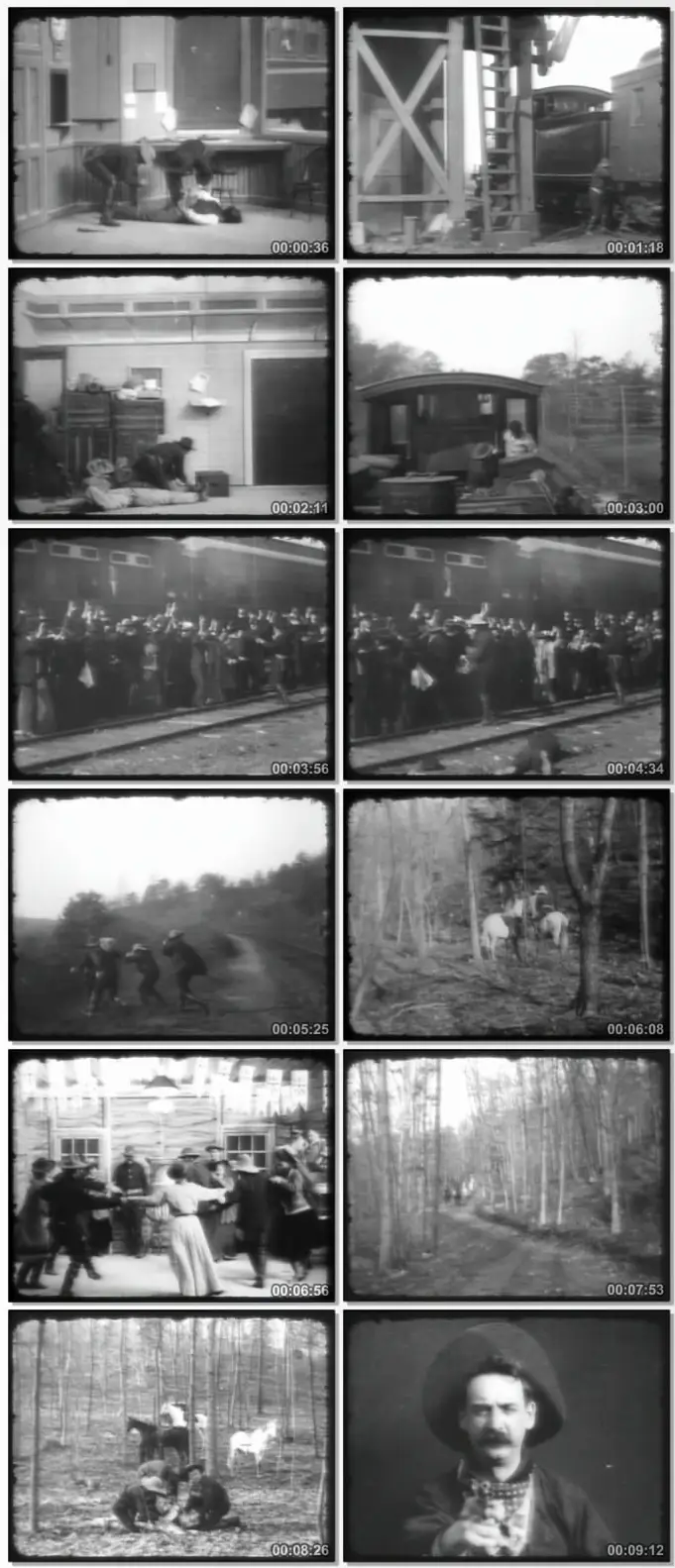The Great Train Robbery (1903) - Edwin S. Porter
DX50 | MP3 - 160 kbps | 720 x 560 | Muet/Silent | 9 min | 343 MB
Director: Edwin S. Porter | Country: USA | Genres: Short, Action, Crime, Western
Cast: Gilbert M. Anderson, George Barnes, A.C. Abadie, Walter Cameron
DX50 | MP3 - 160 kbps | 720 x 560 | Muet/Silent | 9 min | 343 MB
Director: Edwin S. Porter | Country: USA | Genres: Short, Action, Crime, Western
Cast: Gilbert M. Anderson, George Barnes, A.C. Abadie, Walter Cameron
Director Edwin S. Porter made film history when he completed the 13 sequences for the 12-minute The Great Train Robbery, released in 1903 but based on an 1896 story by Scott Marble. Featuring the first parallel development of separate, simultaneous scenes, and the first close-up (of an outlaw firing off a shot right at the audience), The Great Train Robbery is among the earliest narrative films with a "Western" setting. The opening scenes show the outlaws holding up the passengers and robbing the mail car in the train, before escaping on horseback. After being knocked out by the bandits, the telegraph operator regains consciousness and heads to the dance hall to get a posse together. The posse takes off to hunt down the outlaws and the chase is on. (allmovie.com by Matthew Tobey)
Review:
There is some doubt as to whether all of The Great Train Robbery's many innovations were actually the first of their kind, but there's no question that Edwin S. Porter's seminal 1903 Western was the first definitive evidence of the power of film editing in the service of a story. Before The Great Train Robbery, most films were either actualities (short documents of prominent people, places, or events) or recorded stage performances. Porter, influenced by the cruder, tableaux-based narrative films of French film pioneer Georges Méliès, created a sensation by coupling a strong story (in this case based on a true event) with expressive editing techniques. The film contains a staggering array of firsts or near-firsts: it was the first to use title cards, an ellipsis, and a panning shot, and probably the first to use a script. More important, it was one of the first works to take advantage of film's unique power to move an audience across time and space with continuity editing and cross-cutting among different stories – techniques that have become the cornerstones of modern cinematic language. The film was also a huge popular success, helping to reduce skepticism about the future of the movie industry. (Porter would go on to give D.W. Griffith – the man who would extend Porter's experiments in cross-cutting to full-length narrative features – his first job: as an actor.) Ironically, The Great Train Robbery's famous final image of a bandit's firing his pistol at the audience was not a part of the film's story, and could have been inserted by exhibitors at either the beginning or the end of the film, but early audiences' tumultuous reaction to it may well have marked the start of America's love affair with the movies. (allmovie.com by Mark Pittillo)
IMDB
Screenshots (Click to enlarge)
Rapidshare Links:
http://rapidshare.com/files/332448634/The.Great.Train.Robbery.1903.Edwin.S.Porter.part1.rar
http://rapidshare.com/files/332470446/The.Great.Train.Robbery.1903.Edwin.S.Porter.part2.rar
http://rapidshare.com/files/332486492/The.Great.Train.Robbery.1903.Edwin.S.Porter.part3.rar
http://rapidshare.com/files/332496138/The.Great.Train.Robbery.1903.Edwin.S.Porter.part4.rar
No Pass
Screenshots (Click to enlarge)
Rapidshare Links:
http://rapidshare.com/files/332448634/The.Great.Train.Robbery.1903.Edwin.S.Porter.part1.rar
http://rapidshare.com/files/332470446/The.Great.Train.Robbery.1903.Edwin.S.Porter.part2.rar
http://rapidshare.com/files/332486492/The.Great.Train.Robbery.1903.Edwin.S.Porter.part3.rar
http://rapidshare.com/files/332496138/The.Great.Train.Robbery.1903.Edwin.S.Porter.part4.rar
No Pass





